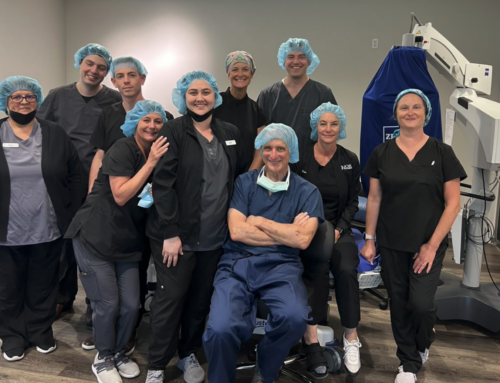
Visual acuity is the most common clinical measurement of how your eyes function. It’s usually one of the first tests taken during a comprehensive eye exam to determine how sharp your vision is.
20/20 Vision
If you have 20/20 vision, you can see an object that is 20 feet away clearly. The term refers to average, normal vision. If your vision doesn’t measure 20/20, you may need to wear contact lenses or glasses to see clearly.
The definition of 20/20 vision is the ability to see an object clearly from 20 feet away. Others with normal vision can also see an object clearly at that distance. 20/20 vision refers to “normal” vision, not “perfect” vision.
Visual acuity is a term that means clarity or sharpness of vision and that the objects you see are crisply outlined and not blurry.
Calling normal vision “20/20 vision” is true for eye care professionals in the U.S., but not everywhere in the world. In Europe and elsewhere, eye care professionals would say that normal vision is 6/6 vision because they use the measurement of 6 meters instead of 20 feet.
Is having 20/20 vision the only thing that matters when it comes to vision?
Having 20/20 vision doesn’t include other factors like peripheral vision (seeing what’s on either side of you), your ability to see colors or your depth perception. Depth perception is also called stereopsis. It refers to being able to see how long, wide and deep an object is, along with how near or far it is from you.
Color blindness means that you don’t see colors the same way other people see them. It’s also called color vision deficiency or poor color vision.
Can your vision be better than 20/20?
Yes. Having 20/20 vision means you have normal or average, vision. Some people have vision that’s better than 20/20, like 20/15 vision or 20/10 vision. This means that you can see something 20 feet away (like a line on an eye chart) that most people can see when they’re 15 feet away (20/15) or 10 feet away (20/10).
Why is having good vision so important?
- Safety: Average activities, such as driving, biking, or even walking can be dangerous for you and others if you can’t see properly. In most U.S. states, you have to have at least 20/40 vision or better to be able to drive without corrective lenses. Having vision that measures 20/200 with correction is the definition of legal blindness in terms of acuity (clarity of vision). Another part of the definition includes peripheral vision.
- Comfort: Being able to see clearly allows you more freedom in your activities. Having good vision means that you won’t have to squint, whether you’re at the back of the classroom or at the front of the movie theater.
- Reading ease: Good vision helps you read more comfortably for work, learning or enjoyment.
- Quality of life: With good vision, you may have a better quality of life.
How common is 20/20 vision?
Most people don’t have 20/20 vision without eyeglasses or contact lenses. One estimate suggests that only about 35% of all adults in the U.S. have 20/20 vision without corrective lenses.
What causes you to have less than 20/20 vision?
There are several eye conditions that can cause your vision to be less than the average of 20/20. These include refractive errors:
- Farsightedness (hyperopia).
- Nearsightedness (myopia).
- Presbyopia. This refers to being unable to focus on objects that are close to you. It generally happens as you get older.
- Astigmatism. In this condition, some part of your eye has an irregular curve.
There are many different conditions that affect your eyesight, including those that are systemic (throughout your body) and those that affect only your eyes.
The importance of eye exams.
A yearly eye exam is recommended for everyone, especially those over the age of 50, to ensure you have clear vision as well as good eye health.
Don’t wait until you can’t read a street sign a few feet away or the computer screen seems fuzzy. If you are age 40 or older and have not had a recent eye disease screening, schedule one today. It is an essential step toward preserving your vision and keeping your eyes healthy.
When you come to us as a patient at Barth Vision, we will begin your treatment with a comprehensive eye exam that will employ the most advanced, state-of-the-art diagnostic equipment available in the vision care world today. Read more…


